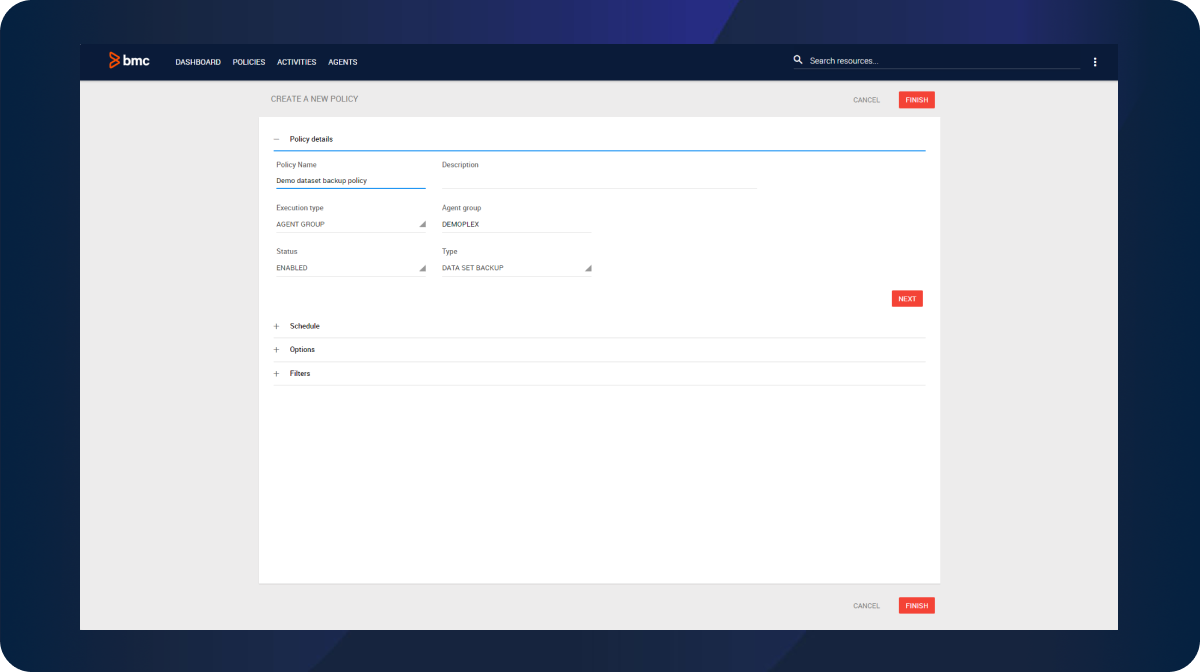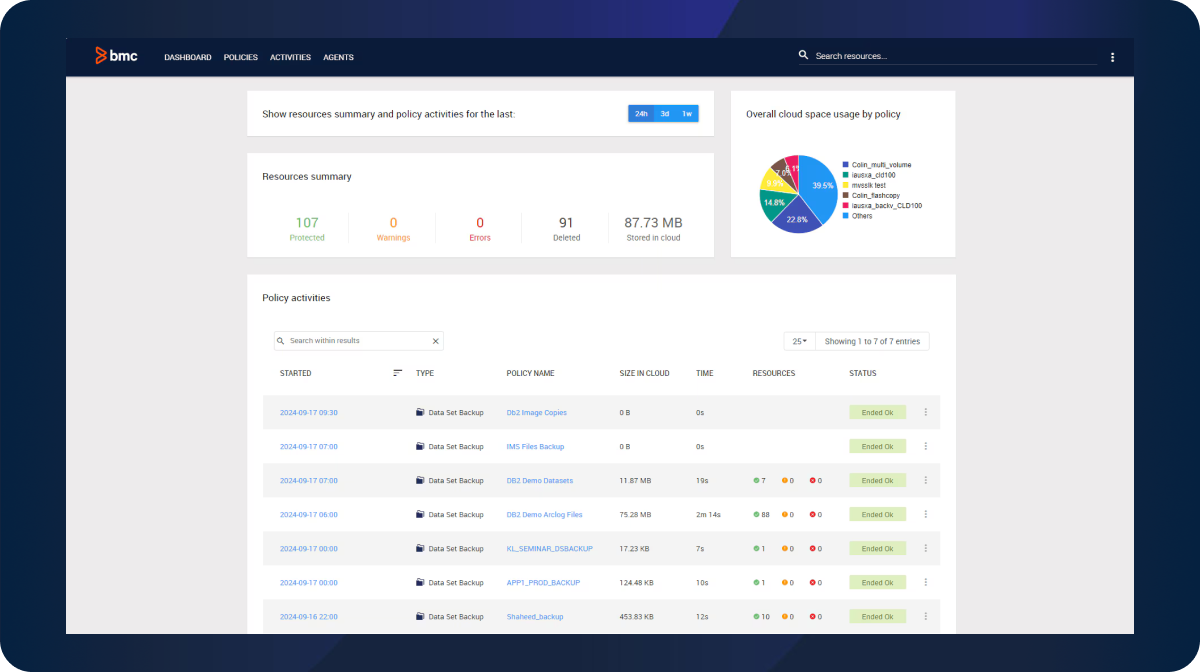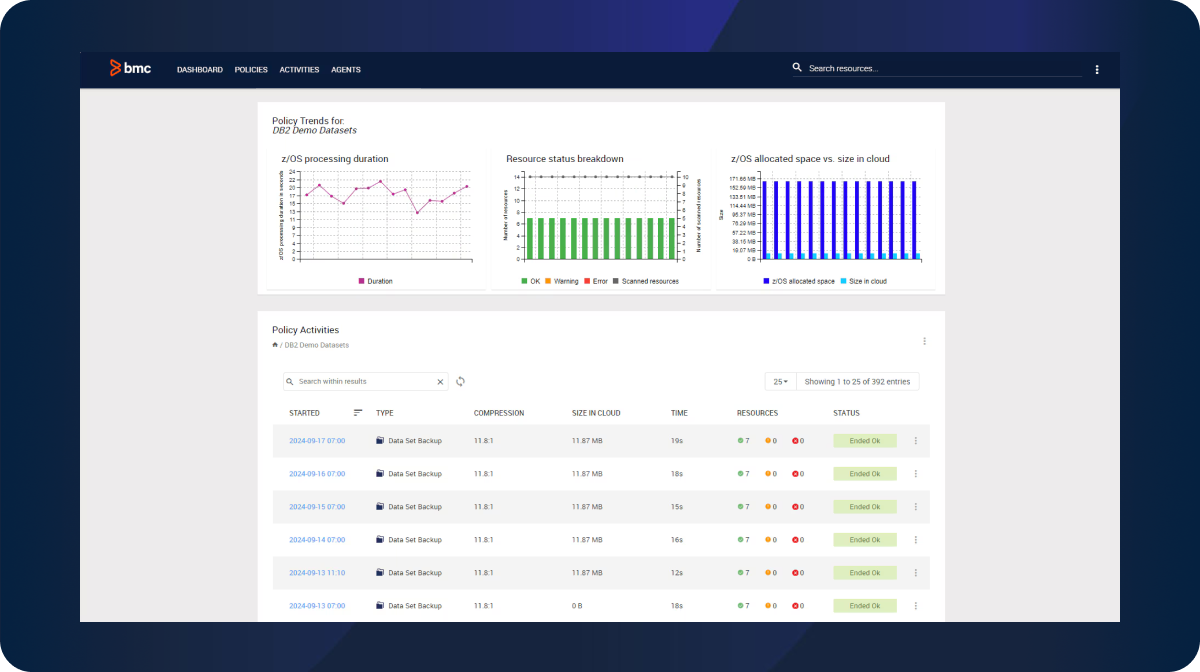
Onboarding
We help ensure your implementation meets your business requirements and user expectations, from data validation to end user training and everything in between.
Speak to a rep about your business needs
See our product support options
General inquiries and locations
Contact usOverview
16x
faster data processing than traditional VTL solutions
12x
cost savings over traditional VTL solutions
50%
CPU savings over traditional tape solutions

Reduce costs & unlock the flexibility of the cloud by moving from tape, VTL, VTS, & other legacy solutions to a streamlined, scalable platform built for modern business needs.
CONSOLIDATE TO SAVE
Eliminate traditional backup software and tape management tools with an all-in-one cloud-enabled platform.
FLEXIBLE STORAGE OPTIONS
Reduce expenses with dynamic storage capacity that scales up and down as needs change.
AUTOMATED TRANSFER
Automate the transfer of large tape data sets to and from the cloud, simplifying operations and saving time.
MINIMAL DISRUPTION
Operate alongside existing tools during transition for a smooth path to the cloud.

Modernize your storage strategy with faster data movement, seamless recovery, and cost-efficient cloud backup and archiving.
LIGHTNING-FAST DATA MOVEMENT
Harness zIIP engines and high-speed TCP/IP transfers to accelerate mainframe data movement, achieving up to 4x faster speeds than traditional tape systems.
IMPROVED RPO AND RTO
Protect your business with additional recovery points, malware-protected backups, and rapid restores directly from the cloud.
CLOUD-ENABLED BACKUP AND RECOVERY
Transition from tape-based systems to cloud backup and restore for cost-effective, high-performance disaster recovery and long-term archiving.
PARALLEL RECOVERY
Restore data quickly and in parallel from the cloud to ensure seamless business operations.

Reduce complexity, control costs, and accommodate any skill level with cloud-first mainframe solutions designed for simplicity, flexibility, and scalability.
LOWER SKILL REQUIREMENTS
Reduce reliance on specialized storage administrators with a modern, intuitive UI that cuts down on complex tasks and human error.
MODERNIZE WITHOUT REWRITING CODE
Write and read mainframe data sets directly to and from the cloud without modifying JCL or existing applications.
REDUCE INFRASTRUCTURE RELIANCE
Bypass the need for DASD or interim storage, enabling cost-effective data management directly in the cloud.
STAY FLEXIBLE
BMC AMI's platform-agnostic solution ensures flexibility to work with any cloud provider, avoiding vendor lock-in.
Product Demo
Simon Youssef
Head of Mainframe Israel Postal Bank
Customer Success
Customer Success
White Paper
Explore seamless tape-free mainframe storage. BMC AMI Cloud Data offers faster, cost-efficient, and secure solutions.
E-book
Transform mainframe storage with Cloud Data Sets. Discover faster, cost-efficient, and secure solutions beyond tape/VTL.
Podcast
Listen to a short history of secondary storage of mainframe data, the current state of tape and VTL, and how object storage is the future of mainframe data storage.